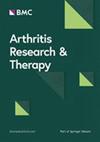Atf3 + senescent chondrocytes mediate meniscus degeneration in aging
IF 4.6
2区 医学
Q1 Medicine
引用次数: 0
Abstract
Meniscus degeneration contributes to knee arthritis progression, but the cellular and molecular mechanisms of meniscus aging remain poorly understood. We aimed to characterize age-related changes in the rat meniscus using single-cell RNA sequencing (scRNA-seq) and identify key pathogenic cell populations and pathways. Meniscal tissues from young (12 weeks) and aged (24 months) rats were processed for histology, flow cytometry, and scRNA-seq. Bioinformatics tools, including Seurat, Monocle 2, and CellChat, were used to analyze cellular composition, pseudotime trajectories, and intercellular communication. Senescence-related features and signaling pathways were evaluated. Knee joint of aged rats exhibited higher Osteoarthritis Research Society International (OARSI) scores and synovial inflammation. scRNA-seq revealed three major chondrocyte subpopulations: Sox9 + stable chondrocytes, Fndc1 + fibrochondrocytes, and Atf3 + senescent chondrocytes. Aging caused a significant increase in Atf3 + senescent chondrocytes, characterized by the expression of senescence markers (Cdkn1a/Cdkn2a) and activation of inflammatory pathways such as tumor necrosis factor (TNF) and nuclear factor-κB (NF-κB). These cells were predominantly located at the endpoint of differentiation trajectories. CellChat analysis identified the ANGPTL4-SDC4 axis as a key signaling pathway mediated by Atf3 + cells. Immunostaining confirmed elevated Angiopoietin-Like Protein 4 (ANGPTL4) expression in aged menisci. We identified Atf3 + senescent chondrocytes as a key pathogenic population in the aging meniscus, driving degeneration via the ANGPTL4 pathway. Targeting Atf3 + cells or ANGPTL4 signaling may offer new therapeutic strategies for age-related meniscus degeneration and arthritis.Atf3 +衰老软骨细胞介导半月板老化变性
半月板变性有助于膝关节关节炎的进展,但半月板老化的细胞和分子机制仍然知之甚少。我们的目的是利用单细胞RNA测序(scRNA-seq)表征大鼠半月板年龄相关的变化,并确定关键的致病细胞群和途径。对幼龄大鼠(12周)和老龄大鼠(24个月)的半月板组织进行组织学、流式细胞术和scRNA-seq处理。生物信息学工具,包括Seurat、Monocle 2和CellChat,被用来分析细胞组成、伪时间轨迹和细胞间通讯。评估衰老相关特征和信号通路。老年大鼠膝关节表现出较高的骨关节炎国际研究学会(OARSI)评分和滑膜炎症。scRNA-seq揭示了三个主要的软骨细胞亚群:Sox9 +稳定软骨细胞、Fndc1 +纤维软骨细胞和Atf3 +衰老软骨细胞。衰老导致Atf3 +衰老软骨细胞显著增加,其特征是衰老标志物(Cdkn1a/Cdkn2a)的表达以及肿瘤坏死因子(TNF)和核因子-κB (NF-κB)等炎症通路的激活。这些细胞主要位于分化轨迹的终点。CellChat分析发现ANGPTL4-SDC4轴是Atf3 +细胞介导的关键信号通路。免疫染色证实老年半月板中血管生成素样蛋白4 (ANGPTL4)表达升高。我们发现Atf3 +衰老软骨细胞是半月板老化的关键致病群体,通过ANGPTL4途径驱动变性。靶向Atf3 +细胞或ANGPTL4信号可能为年龄相关性半月板变性和关节炎提供新的治疗策略。
本文章由计算机程序翻译,如有差异,请以英文原文为准。
求助全文
约1分钟内获得全文
求助全文
来源期刊

Arthritis Research & Therapy
RHEUMATOLOGY-
CiteScore
8.60
自引率
2.00%
发文量
261
审稿时长
14 weeks
期刊介绍:
Established in 1999, Arthritis Research and Therapy is an international, open access, peer-reviewed journal, publishing original articles in the area of musculoskeletal research and therapy as well as, reviews, commentaries and reports. A major focus of the journal is on the immunologic processes leading to inflammation, damage and repair as they relate to autoimmune rheumatic and musculoskeletal conditions, and which inform the translation of this knowledge into advances in clinical care. Original basic, translational and clinical research is considered for publication along with results of early and late phase therapeutic trials, especially as they pertain to the underpinning science that informs clinical observations in interventional studies.
 求助内容:
求助内容: 应助结果提醒方式:
应助结果提醒方式:


